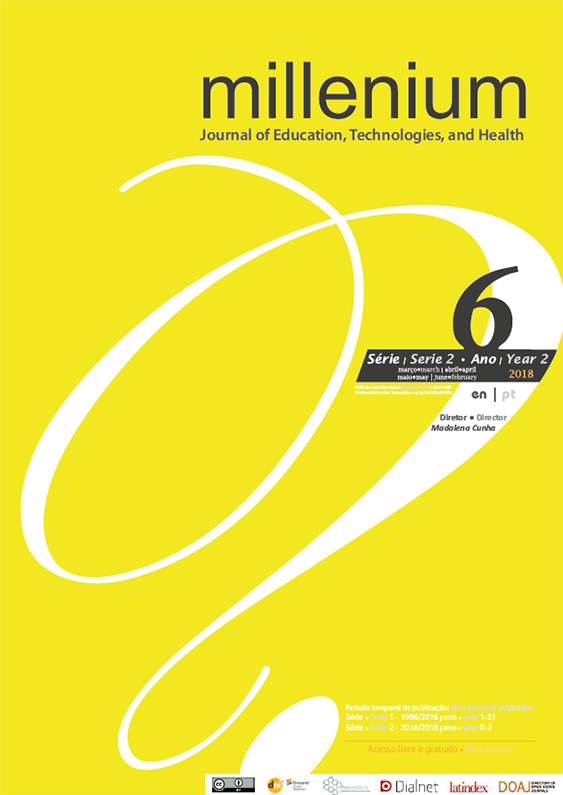Complications of fluidotherapy in patients with acute pancreatitis: A contribution
DOI:
https://doi.org/10.29352/mill0206.02.00160Keywords:
Acute pancreatitis, Fluidotherapy, Complications, ROC curves, Logistic regressionAbstract
Introduction: Aggressive fluid therapy is frequently suggested in the treatment of acute pancreatitis. However, there is some controversy about the effect of this therapy concerning the development of clinical complications and the need for surgery.
Objectives: To explore the relationship between fluid administration in the first 48 hours and the development of local or systemic complications, to contribute to clarifying some open questions on this subject.
Methods: This study is based on records of 109 patients admitted to the Surgical High Dependency Unit of Tondela Viseu Hospital Centre, between 2007 and 2012, with the diagnosis of acute pancreatitis. Data were explored, and statistical tests were used to identify variables that differentiate patients with complications. Receiver operating characteristic (ROC) curves allowed to relate the amount of fluids at 48 hours with the occurrence of each complication. Logistic regression models were used to identify independent risk factors for each complication.
Results: There was no significant relationship between fluid therapy at 48 hours with death nor with the occurrence of systemic complications. As opposed, fluid therapy at 48 hours revealed to be associated with local and late complications, presence of infection and need for surgery.
Conclusion: High levels of fluid therapy in the first 48 hours were associated with the development of complications.
Downloads
References
Balthazar, E. J. (2002). Acute Pancreatitis: Assessment of Severity with Clinical and CT Evaluation. Radiology, 223(3), 603–613. http://doi.org/10.1148/radiol.2233010680
Banks, P. A., Bollen, T. L., Dervenis, C., Gooszen, H. G., Johnson, C. D., Sarr, M. G., Tsiotos, G. G. & Vege, S. S. (2012). Classification of acute pancreatitis--2012: revision of the Atlanta classification and definitions by international consensus. Gut, 62(1), 102–111. http://doi.org/10.1136/gutjnl-2012-302779
Blumgart L. (2016). Surgery of the liver, biliary tract, and pancreas. Philadelphia, PA: Saunders Elsevier.
Dupuis, C. S., Baptista, V., Whalen, G., Karam, A. R., Singh, A., Wassef, W., & Kim, Y. H. (2013). Diagnosis and management of acute pancreatitis and its complications. Gastrointestinal Intervention, 2(1), 36–46. http://doi.org/10.1016/j.gii.2013.03.001
Gardner, T. B., Vege, S. S., Pearson, R. K. & Chari, S. T. (2008). Fluid Resuscitation in Acute Pancreatitis. Clinical Gastroenterology and Hepatology, 6(10), 1070–1076. http://doi.org/10.1016/j.cgh.2008.05.005
Glasbrenner, B. & Adler, G. (1993). Pathophysiology of acute pancreatitis. Hepatogastroenterology. 40(6):517-521.
Hosmer, D. W. & Lemeshow, S. (2000). Applied Logistic Regression (2nd edition). New York: John Wiley & Sons.
Janisch, N. H. & Gardner, T. B. (2016). Advances in Management of Acute Pancreatitis. Gastroenterology Clinics of North America, 45(1), 1–8. http://doi.org/10.1016/j.gtc.2015.10.004
Kalkwarf, K.J. & Cotton, B. A. (2017). Resuscitation for Hypovolemic Shock. Surgical Clinics of NA, 97(6), 1307–1321. http://doi.org/10.1016/j.suc.2017.07.011
Mao, E.Q., Tang, Y.Q., Fei, J., Qin, S., Wu, J., Li, L., Min, D. & Zhang, S.D. (2009). Fluid therapy for severe acute pancreatitis in acute response stage. Chinese Medical Journal, 122(2), 169–173. http://doi.org/10.3760/cma.j.issn.0366-6999.2009.02.011
Nasr, J. Y. & Papachristou, G. I. (2011). Early Fluid Resuscitation in Acute Pancreatitis: A Lot More Than Just Fluids. Clinical Gastroenterology and Hepatology, 9(8), 633-634. http://doi.org/10.1016/j.cgh.2011.03.010
Pereira, J., Constantino, J., Duarte, L., Pinho, H., & Pinheiro, L. (2015). Surgical treatment of severe acute pancreatitis: After 15 years of practice. International Journal of Hepatobiliary and Pancreatic Diseases, 5, 74-81. http://doi.org/10.5348/ijhpd-2015-38-OA-13
Pollock, A. V. (1959). Acute pancreatitis; analysis of 100 patients. British Medical Journal, 1(5113), 6–14.
Stigliano, S., Sternby, H., de Madaria, E., Capurso, G., & Petrov, M. S. (2017). Early management of acute pancreatitis: A review of the best evidence. Digestive and Liver Disease, 49(6), 585–594. http://doi.org/10.1016/j.dld.2017.01.168
Tenner, S., Baillie, J., DeWitt, J. & Vege, S. S. (2013). American College of Gastroenterology guideline: management of acute pancreatitis. The American Journal of Gastroenterology, 108(9), 1400–1415. http://doi.org/10.1038/ajg.2013.218
Yang, C. J., Chen, J., Phillips, A. R. J., Windsor, J. A., & Petrov, M. S. (2014). Predictors of severe and critical acute pancreatitis: A systematic review. Digestive and Liver Disease, 46(5), 446–451. http://doi.org/10.1016/j.dld.2014.01.158
Downloads
Published
How to Cite
Issue
Section
License
Authors who submit proposals for this journal agree to the following terms:
a) Articles are published under the Licença Creative Commons (CC BY 4.0), in full open-access, without any cost or fees of any kind to the author or the reader;
b) The authors retain copyright and grant the journal right of first publication, allowing the free sharing of work, provided it is correctly attributed the authorship and initial publication in this journal;
c) The authors are permitted to take on additional contracts separately for non-exclusive distribution of the version of the work published in this journal (eg, post it to an institutional repository or as a book), with an acknowledgment of its initial publication in this journal;
d) Authors are permitted and encouraged to publish and distribute their work online (eg, in institutional repositories or on their website) as it can lead to productive exchanges, as well as increase the impact and citation of published work
Documents required for submission
Article template (Editable format)















